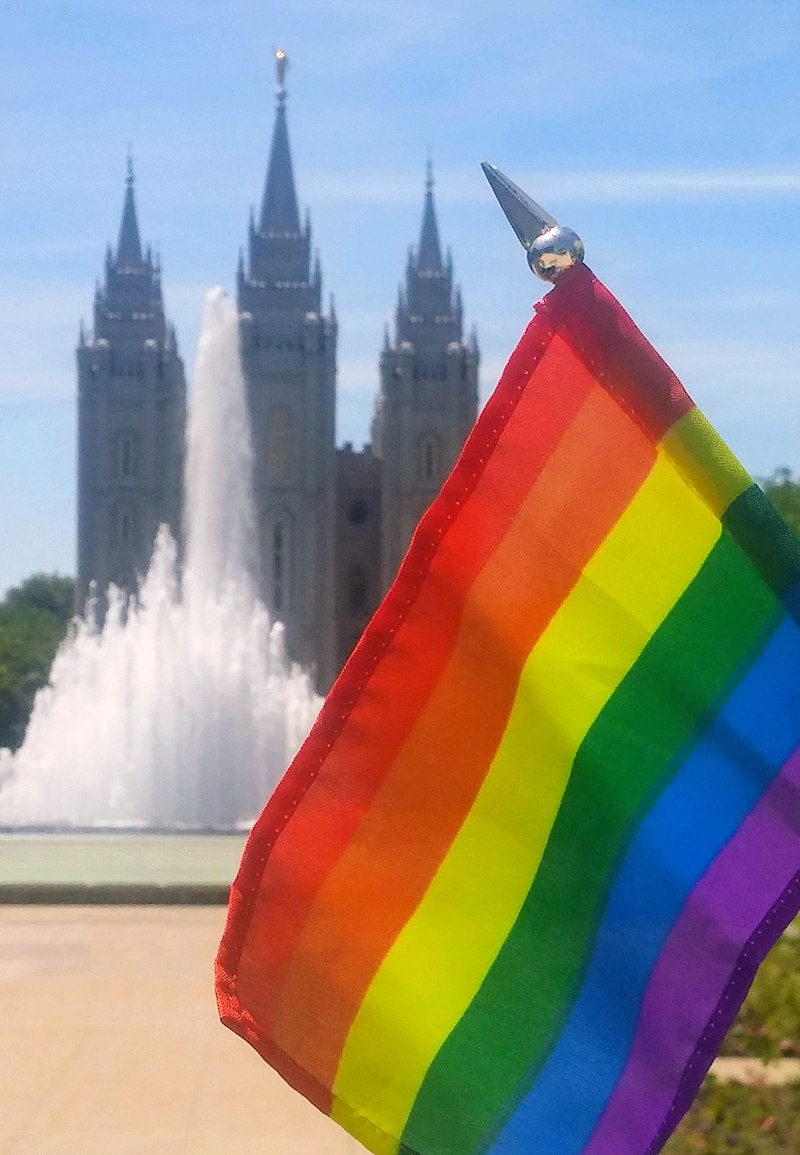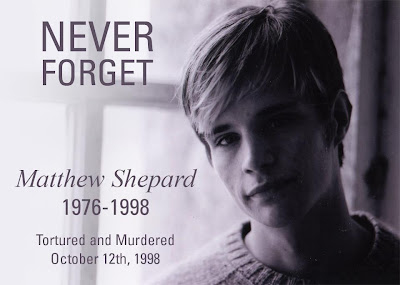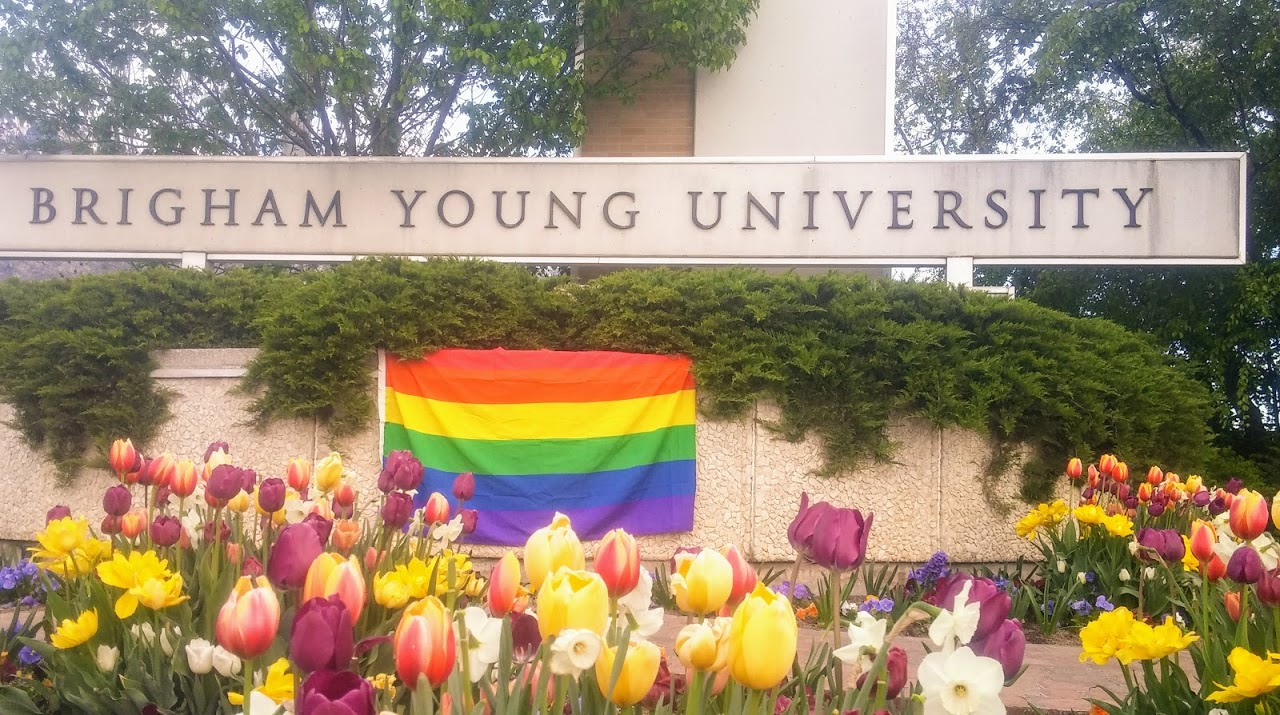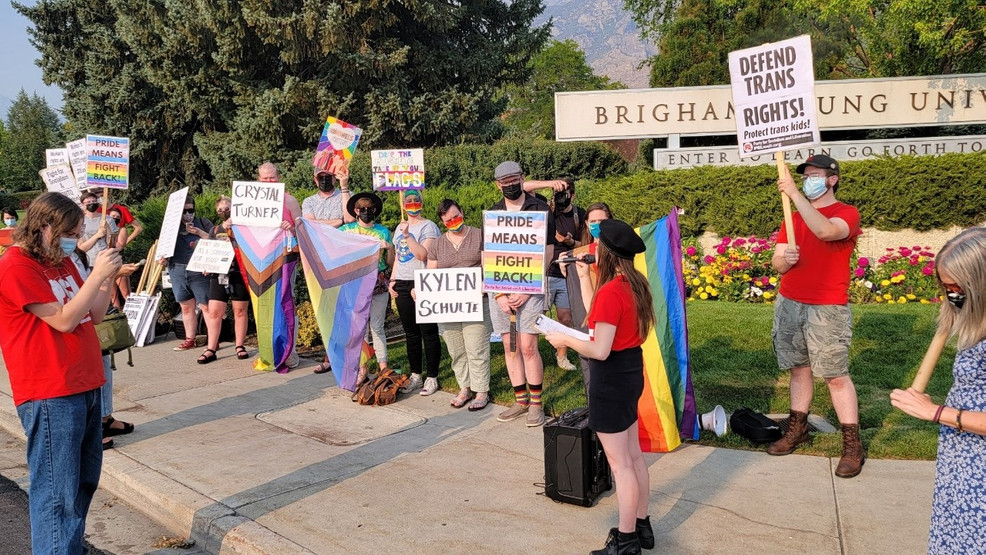 All
homosexual or same-sex sexual activity is forbidden by the Church of Jesus
Christ of Latter-day Saints (LDS Church) in its law of chastity, and the church
teaches that God does not approve of same-sex marriage. Adherents who
participate in same-sex sexual behavior may face church discipline. Members of
the church who experience homosexual attractions, including those who
self-identify as gay, lesbian, or bisexual remain in good standing in the church
if they abstain from same-sex marriage and all sexual relations outside an
opposite-sex marriage, but all, including those participating in same-sex
activity and relationships, are allowed to attend weekly church worship
services. However, in order to receive church ordinances such as baptism, and to
enter church temples, adherents are required to abstain from same-sex relations
or any sexual activity outside a legal marriage between one man and one woman.
Additionally, in the church's plan of salvation non-celibate gay and lesbian
individuals will not be allowed in the top tier of heaven to receive exaltation
unless they repent, and a heterosexual marriage is a requirement for exaltation.
The church's policies and treatment of LGBT people has long been a source of
controversy both within and outside the church. They have also been a
significant cause of disagreement and disaffection by members.
All
homosexual or same-sex sexual activity is forbidden by the Church of Jesus
Christ of Latter-day Saints (LDS Church) in its law of chastity, and the church
teaches that God does not approve of same-sex marriage. Adherents who
participate in same-sex sexual behavior may face church discipline. Members of
the church who experience homosexual attractions, including those who
self-identify as gay, lesbian, or bisexual remain in good standing in the church
if they abstain from same-sex marriage and all sexual relations outside an
opposite-sex marriage, but all, including those participating in same-sex
activity and relationships, are allowed to attend weekly church worship
services. However, in order to receive church ordinances such as baptism, and to
enter church temples, adherents are required to abstain from same-sex relations
or any sexual activity outside a legal marriage between one man and one woman.
Additionally, in the church's plan of salvation non-celibate gay and lesbian
individuals will not be allowed in the top tier of heaven to receive exaltation
unless they repent, and a heterosexual marriage is a requirement for exaltation.
The church's policies and treatment of LGBT people has long been a source of
controversy both within and outside the church. They have also been a
significant cause of disagreement and disaffection by members.
The LDS Church's statements and actions have overwhelmingly focused on male homosexuality and rarely mention lesbianism or bisexuality. The church previously taught that homosexuality was a curable condition and counseled members that they could and should change their attractions and provided therapy and programs with that goal. From 1976 until 1989 the Church Handbook called for church discipline for members attracted to the same sex equating merely being homosexual with the seriousness of acts of adultery and child molestation—even celibate gay people were subject to excommunication. Church publications now state that "individuals do not choose to have such attractions", its church-run therapy services no longer provides sexual orientation change efforts, and the church has no official stance on the causes of homosexuality. A 2016 article on a church website states that, "While shifts in sexuality can and do occur for some people, it is unethical to focus professional treatment on an assumption that a change in sexual orientation will or must occur. Again, the individual has the right to define the desired outcome." These current teachings and policies leave homosexual members with the option of potentially harmful attempts to change their sexual orientation, entering a mixed-orientation opposite-sex marriage, or living a celibate lifestyle without any sexual expression (including masturbation).
 The LDS Church has campaigned against government
recognition of same-sex marriage, and the topic of same-sex marriage has been
one of the church's foremost public concerns since 1993. For example, church
members represented as much as 80 to 90 percent of the early volunteers
petitioning voters door-to-door and 50 percent of the campaign funds in support
of California Proposition 8 (2008). The church supported a Salt Lake City
ordinance protecting members of the LGBT community against discrimination in
employment while exempting religious institutions from these protections.
The LDS Church has campaigned against government
recognition of same-sex marriage, and the topic of same-sex marriage has been
one of the church's foremost public concerns since 1993. For example, church
members represented as much as 80 to 90 percent of the early volunteers
petitioning voters door-to-door and 50 percent of the campaign funds in support
of California Proposition 8 (2008). The church supported a Salt Lake City
ordinance protecting members of the LGBT community against discrimination in
employment while exempting religious institutions from these protections.
The Church’s current public stance is a stark contrast
from 14 years ago, when its members were among the largest campaign contributors
in support of California’s Prop. 8, which defined marriage as between a man
and a woman in response to cities such as San Francisco granting marriage
licenses to same-sex couples.
In November 2015, the church updated its policies regarding
those in legal same-sex unions, stating that such couples are apostates from the
church. These policies also barred such couples' children—either adopted or
biological—from being baptized, confirmed, ordained, or participating in
mission service until reaching adulthood and obtaining permission from the First
Presidency. The church reversed its policy in 2019 stating that couples in legal
same-sex unions would no longer be considered apostate and that their children
can be baptized without First Presidency approval. However, it also stated that
it still considers same-sex marriage to be a "serious transgression,"
and that any same-sex sexual activity will be treated in the same way as
"immoral conduct" in a heterosexual relationships.
In recent news, the Mormon Church backs the Respect for
Marriage Act, but maintains relationships are still sinful. The Church said in a
statement that church doctrine would continue to consider same-sex relationships
to be against God’s commandments. Yet it said it would support rights for
same-sex couples as long as they didn’t infringe upon religious groups’
right to believe as they choose.
“We believe this approach is the way forward. As we work
together to preserve the principles and practices of religious freedom together
with the rights of LGBTQ individuals much can be accomplished to heal
relationships and foster greater understanding,” the church said in a
statement posted on its website.
Support for the Respect for Marriage Act under
consideration in Congress is the church’s latest step to stake out a more
welcoming stance toward the LGBTQ community while holding firm to its belief
that same-sex relationships are sinful. Still, its stance toward LGBTQ people
— including those who grow up in the church — remains painful for many.
Brigham Young's son Brigham
Morris Young publicly performing as a cross-dressing singer under the
pseudonym Madam Pattirini. He could produce a convincing falsetto, and
many in the audience did not realize that Pattirini was Young.
Evan
Stephens was 36 years old when he was called as the Music Director of
the Mormon Tabernacle Choir, a position he held for 26 years (1890-1916).
Stephens used to perform also as a cross-dresser singer with bonnet and veil to
impersonate an old maid soprano.
|
David Archuleta is Stepping Back from the Mormon Faith After Coming Out as Queer. |
|
|
A message for all religious leaders and communities who still teach shame, pain, and inauthenticity when it comes to LGBTQ people. David Archuleta nails it! His words sum up the importance of doing better and honoring who—and what we are. |
David Archuleta opens up about his journey coming out as a member of The Church of Jesus Christ of Latter-day Saints. The “Faith in Me” singer also talks about how he almost got married three times, coming to terms with his sexuality, and learning to love himself. |
|
Soon after, Archuleta called off his engagement, and in
June 2021 he revealed he's a part of the LGBTQ community. Ever since, though, he
has struggled with a "faith crisis," Archuleta says, "that's
pretty much rocked my world." Suppressing his sexuality had taken a toll on
him, and at his lowest, he says he contemplated suicide because of the church's
doctrine: "I thought it would be a better choice to just end my life." Today, Archuleta, who now identifies as queer, is still healing. |
|
 Stuart
Matis, a pious churchgoer, prayed and worked to change his sexual
orientation. He died trying.
Stuart
Matis, a pious churchgoer, prayed and worked to change his sexual
orientation. He died trying.
It had become an all
too familiar sound. Late on the night of Feb. 24 2000, Stuart Matis’s mother lay awake in bed,
listening to her 32-year-old son pacing his room unable to sleep. She worried
that his depression was worsening. A year earlier Matis had told his parents he
was gay, and all three, devout Mormons, had struggled to reconcile Matis’s
homosexuality with the teachings of their church. Matis found little comfort in
Mormon doctrine, which regards homosexuality as an ‘abominable’ sin. A
church therapist instructed him to suppress his sexuality or to undergo
‘reparative therapy’ to become a heterosexual. Matis was especially
frustrated by the church’s energetic efforts to pass Proposition 22,
California’s ballot measure banning same-sex marriage. The YES ON PROP 22
signs dotted his Santa Clara neighborhood, many placed there by church members,
were a reminder of his failure to find acceptance as a Mormon and gay man.
Matis concluded he could not be both. That night, his mother got out of bed and wrote a letter asking the church to reconsider its position on gay Mormons. Only later would she learn that her son had been up writing his own letter, to his family and friends, explaining why he couldn’t continue to live. Early the next morning, 11 days before voters would overwhelmingly approve Prop 22, Matis drove to the local Mormon headquarters, pinned a DO NOT RESUSCITATE note to his shirt and shot himself in the head.
See - Mormon Church: The Powerful Force Behind Proposition 22
.jpg) This
is the Los Altos LDS chapel, where Stuart Matis took his own life in despair
over the Mormon Church's aggressive fight against marriage equality.
This
is the Los Altos LDS chapel, where Stuart Matis took his own life in despair
over the Mormon Church's aggressive fight against marriage equality.
Matis’s death galvanized gay
activists, who accused PROP 22 supporters of driving him to the grave. Friends
and family agree that the church’s active support of the measure contributed
to his decision to end his life when – and where – he did. Clearly, they
say, he was trying to make a statement.
But that is only part of the story.
Though gays and lesbians enjoy more rights and protections than ever before -
last week Vermont approved same-sex partnerships akin to marriage - gays in
search of spiritual support often find their church, synagogue or mosque to be
far less accepting. The Mormons, who adhere to a strict moral code of conduct,
disapproval by the church can be especially devastating. For Stuart Matis, it
apparently was too much to bear. (The Mormon Church declined to comment about
Matis. "Suicide is a tragedy of great personal loss for family and
community," said a spokesman. "We express our sympathy and have
respect for the privacy of the families.")
Even as a young boy, friends recall,
Matis cherished his Mormon identity and the church’s moral demands. But at 7,
Matis began harboring a terrifying secret: he realized he was attracted to boys.
For the next twenty years he kept the secret from everyone he knew and prayed
fervently for God to make him heterosexual. He tried to make up for what he
considered his shortcoming by being perfect in other areas of his life. He
studied hard in school and attended every church function he could. Though he
deeply loved his family, he showed little outward affection, fearing he would
blurt out his secret in an avalanche of emotion. "He would punish himself
if he had a [homosexual] thought," said his childhood friend Jenifer
Mouritsen. "He wouldn’t allow himself to go to a friend’s birthday
party or [wouldn’t] watch his favorite TV program. " Instead, he would
sit in his room, and read Scripture. He set goals and read scripture. He set
goals for himself not to think about boys for a certain length of time.
In some ways, being a Mormon made it
easy for Matis to conceal his homosexuality. The religion strictly forbids
contact between men and women before marriage. As a teenager, Matis hung out
with a group of boys and girls who went to parties and school dances together.
As he got older, it became more
difficult to keep his feelings hidden. He enrolled at Brigham Young University
in Utah, spending hours in the library looking for a technique for becoming
straight. After graduation, he eventually landed a job at Andersen Consulting
back in California in 1996. Handsome and single, he seemed a perfect catch. At
church, he avoided well-meaning members who gently prodded him to settle down
with a nice Mormon girl.
Finally, early last year, his agony
spilled into the open. Depressed and desperate, he had begun for the first time
to conclude that maybe the church was wrong. He thought about leaving it. He
approached his local bishop, Russell Hancock, and told him he was gay and
thought about killing himself. Hancock, who counseled Matis for several months,
says he pleaded with Stuart. I said, "If this is a choice between life and
the church", he should choose his life."
Hancock urged him to tell his parents
he was gay. Matis had told only one person, his friend Clay Whitmer. The two had
met in Italy, when both were serving their obligatory proselytizing mission for
the church. Back in California years later, Whitmer and Matis confided to each
other that they were gay. Matis’s brother, Bill, and sister Katherine began
wondering aloud about their brother’s sexual orientation. Their mother went to
Stuart’s room early last year and to settle the matter once and for all.
"Stuart, are you gay?" she asked. "Yes, I am," he said.
To
Matis’s surprise, his family accepted his homosexuality. They spent many
evenings talking and crying into the night. He was able to tell them how much he
loved them. Unburdening himself to his family was a relief; yet it did little to
lift his depression. He struggled to figure out how to live as a gay man without
disobeying the teachings of the church - which requires gays and lesbians to
remain forever celibate. He went to a few gay dance clubs and parties but
didn’t dare consider intimacy with men he met, and apparently remained
celibate his whole life.
Matis’s despair mixed with anger. He
lashed out at the church’s teachings in a blistering 12-page letter to a
cousin. "Straight members have absolutely no idea what it is like to grow
up gay in this church," he wrote. "It is a life of constant torment,
self-hatred and internalized homophobia." Matis stopped going to church
altogether, but would not let go of his faith in the church. "He was able
to [reject Mormon teachings on homosexuality] intellectually," says
Alejandro Navarro, a gay friend, "but emotionally he couldn’t." Late
last year, he told his parents he’d bought a gun, but warned them that if they
put him in an institution he would never speak to them again. The last week of
his life, in a final act of separation, he stopped wearing his
"garments", the ritual shirt and shorts many Mormons wear under their
clothes.
Matis’s parents found the suicide
note on their son’s bed the morning of his death. They frantically called his
friends, hoping they’d know where he went. One person did; Clay Whitmer. Matis
told Whitmer of his plans to commit suicide. Whitmer planned to cheer up his old
friend, but didn’t get there in time. A few weeks later, anguished at his
friend’s death and tormented by his own long-term depression, Whitmer put a
gun to his own head.
"Mother, Dad and family, I have committed suicide," Matis’s note began. "I engaged my mind in a false dilemma: either one was gay or one was Christian. As I believed I was Christian, I believed I could never be gay." Stuart Matis struggled his whole life to resolve that dilemma. The people who dressed him for burial were struck by the sight of his knees, deeply callused from praying for an answer that never came. (More about Stuart can be read here)
|
|
2018 · 1hr 25min TV-14 - Documentary · LGBT A surprise federal court ruling in 2013 legalized gay marriage for Utah - triggering a fierce battle in a state where the Mormon church values control the Legislature and every aspect of public life.
|

|
In society at large LGBT individuals
especially youth are at a higher risk of depression, anxiety, and suicide.
Though causes of mental health risk are complex, one oft cited reason for these
higher risks is minority stress stemming from societal anti-LGBT biases and
stigma, rejection, and internalized homophobia. A 2016 empirical study found a
correlation between the percentage of Latter-day Saints in a U.S. state and the
suicide rates of that State, surmising the reason was due to the Church of Jesus
Christ of Latter-day Saints' stance on same-sex sexual relations. However, the
study could not examine what percentages of the deaths were LGBT persons or the
percentage that were Latter-day Saints. A 2002 research report found a negative
correlation in suicide between LDS Church youth members and nonmember youth in
Utah, finding higher levels of religiosity appear to be inversely associated
with suicide, though the study does not take into account sexual orientation or
gender identity and expression. |
|
Other studies have shown that LGBTQ Mormons and former Mormons experience higher rates of certain mental health disorders such as PTSD, major depressive disorder, and generalized anxiety disorder than the general population. These are positively correlated with suicidality. One snowball sampling study of 1,612 LGBT Mormon and former Mormon respondents in 2015 found that involvement with the Church of Jesus Christ of Latter-day Saints (LDS Church) and being single and celibate or engaging in a mixed-orientation marriage are both associated with higher rates of depression and a lower quality of life for LGBT individuals. A nonprobability sampling technique observed clinically significant symptoms of complex post-traumatic stress disorder related to religious beliefs and experiences at high rates among affiliated and disaffiliated LGBTQ Mormons in the study. Many have stated the belief that LDS teachings have contributed to the suicides of LGBTQ members. For example, LDS historian Gregory Prince stated that by condemning homosexuality as "evil, self-inflicted, and impossible in postmortal existence" LDS church leaders have enabled harsh behavior by its members with the alarming number of LDS LGBT homeless and Utah's highest per capita teen suicide rate in the country manifesting the effects of this cruelty. A prominent openly gay member Mitch Mayne wrote in 2012 that his LDS mother told him it would have been better for her if he had been born dead (i.e. stillborn) rather than live and grow up and be gay.
Mormon No More
|
"We were creating the perfect Mormon family, and then I fell in love with my
friend." The life changing story of two women who left the Mormon church for
love. The all-new documentary "Mormon No More" is streaming only on Hulu. |
@LatterGayStories
sits down with Sally & Lena, their family, and the cast of 'Mormon No
More' at the Utah screening of this ABC HULU documentary! Kyle Ashworth
moderates a Q&A discussion with the cast of Mormon No More. This hit ABC
News documentary highlights the story of Lena and Sally, two women who
met at the Mormon church and ended up falling in love. Intertwined are a
variety of other queer Mormon stories, each sharing the experiences of
the LGBTQ community inside (and outside) of Mormonism. |
 The U.S. Department of Education had opened a civil-rights
investigation into how LGBTQ students are disciplined at Brigham Young
University, a private religious school.
The U.S. Department of Education had opened a civil-rights
investigation into how LGBTQ students are disciplined at Brigham Young
University, a private religious school.
The complaint under investigation came after the school
said it would still enforce a ban on same-sex dating even after that section was
removed from the written version of the school’s honor code, the Salt Lake
Tribune reported. Students can be punished for holding hands or kissing someone
of the same sex, harsher discipline than that faced by heterosexual couples at
the school operated by The Church of Jesus Christ of Latter-day Saints.
BYU removed its written ban on “homosexual behavior,”
in early 2020, prompting students to publicly come out as members of the LGBTQ
community. But the school clarified a few weeks later that same-sex dating is
still prohibited, even if it’s no longer expressly written in the honor code.
It also bans things such as alcohol  consumption,
beards and piercings.
consumption,
beards and piercings.
Students protested the apparent reversal, saying they felt
tricked into coming out. The federal investigation from the department’s
Office for Civil Rights started late last year under Title IX, the law that
protects against discrimination on the basis of sex in schools.
A university spokeswoman acknowledged the investigation but
said in a statement that BYU is within its rights to enforce the church’s
policies against same-sex relationships and does not anticipate any further
action.
“BYU is exempt from application of Title IX rules that
conflict with the religious tenets of The Church of Jesus Christ of Latter-day
Saints,” Carri Jenkins said in a statement.
.jpg) The
U.S. Department of Education dismissed a civil-rights investigation into how
LGBTQ students are disciplined at Brigham Young University, saying it doesn’t
have the authority to enforce the matter at the private religious school.
The
U.S. Department of Education dismissed a civil-rights investigation into how
LGBTQ students are disciplined at Brigham Young University, saying it doesn’t
have the authority to enforce the matter at the private religious school.
The complaint under investigation came after the school
said it would still enforce a ban on same-sex dating even after that section was
removed from the written version of the school’s honor code. Students can be
punished for holding hands or kissing someone of the same sex, harsher
discipline than that faced by heterosexual couples at the school operated by The
Church of Jesus Christ of Latter-day Saints.
Nearly all students are members of the faith. Punishments
for violations range from discipline to suspension and expulsion.
BYU announced the decision, sharing a letter it received from the Department of Education that explained the finding that the college is exempt from parts of Title IX, the law that protects against discrimination on the basis of sex in schools.
While LDS Church affirmed its support of the Respect for
Marriage Act, this action would seem to indicate that, while the Church's
doctrine on marriage hasn't changed, Mormon leaders have offered support of
civil same-sex marriages.
This news may delight some Latter-day Saints, and may
grieve others, but there's a problem here that all members of the Mormon Church
should recognize. The LDS Church has modern prophets and apostles who supposedly
hear from God and speak on His behalf to Latter-day Saints. But, if there really
are modern prophets, why does the LDS Church change its positions on things so
quickly? If the prophets are genuine, then should they not be stable and
unmovable in the face of cultural pressure?
It seems like the LDS Church's willingness to bend-the-knee
to modern cultural issues and pressures is itself a demonstration of the
falseness of Mormon Apostles and Prophets. These changes are "bad
fruit," and as followers of God, we're commanded to reject false prophets
who yield bad fruit.
This LDS Church statement is a PROBLEM for Mormons

But the Mormon
Church has reworded it to read For God so loved the straight people, that
he gave his only begotten Son, that only the straight people that
believeth in him should not perish, but have everlasting life.
I believe that in God's kingdom it doesn't matter what race you are or what gender you are. We are all children of God and all heirs according to this promise.
Galatians 3:25-29 reads:
25But after that faith is come, we are no longer under a schoolmaster. 26For ye
are all the children of God by faith in Christ Jesus. 27For as many of you as
have been baptized into Christ have put on Christ. 28There is neither Jew nor
Greek, there is neither bond nor free, there is neither male nor female: for ye
are all one in Christ Jesus. 29And if ye be Christ's, then are ye Abraham's
seed, and heirs according to the promise.